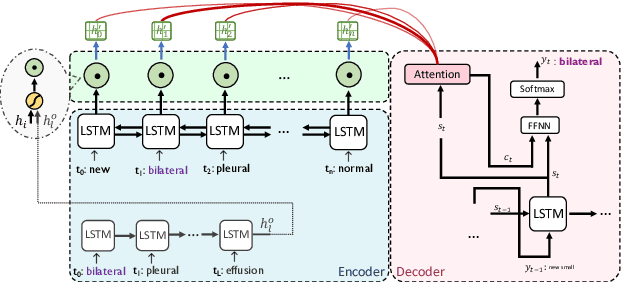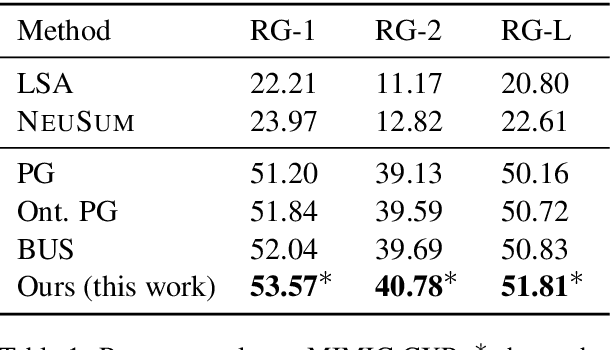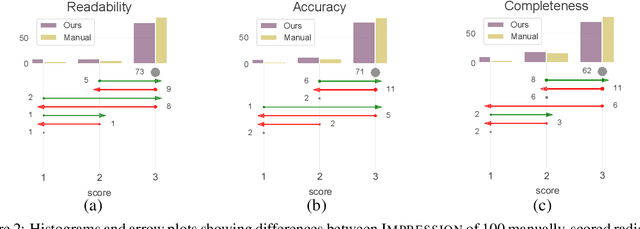Ross W. Filice
Attend to Medical Ontologies: Content Selection for Clinical Abstractive Summarization
May 01, 2020



Abstract:Sequence-to-sequence (seq2seq) network is a well-established model for text summarization task. It can learn to produce readable content; however, it falls short in effectively identifying key regions of the source. In this paper, we approach the content selection problem for clinical abstractive summarization by augmenting salient ontological terms into the summarizer. Our experiments on two publicly available clinical data sets (107,372 reports of MIMIC-CXR, and 3,366 reports of OpenI) show that our model statistically significantly boosts state-of-the-art results in terms of Rouge metrics (with improvements: 2.9% RG-1, 2.5% RG-2, 1.9% RG-L), in the healthcare domain where any range of improvement impacts patients' welfare.
Ontology-Aware Clinical Abstractive Summarization
May 14, 2019


Abstract:Automatically generating accurate summaries from clinical reports could save a clinician's time, improve summary coverage, and reduce errors. We propose a sequence-to-sequence abstractive summarization model augmented with domain-specific ontological information to enhance content selection and summary generation. We apply our method to a dataset of radiology reports and show that it significantly outperforms the current state-of-the-art on this task in terms of rouge scores. Extensive human evaluation conducted by a radiologist further indicates that this approach yields summaries that are less likely to omit important details, without sacrificing readability or accuracy.
 Add to Chrome
Add to Chrome Add to Firefox
Add to Firefox Add to Edge
Add to Edge